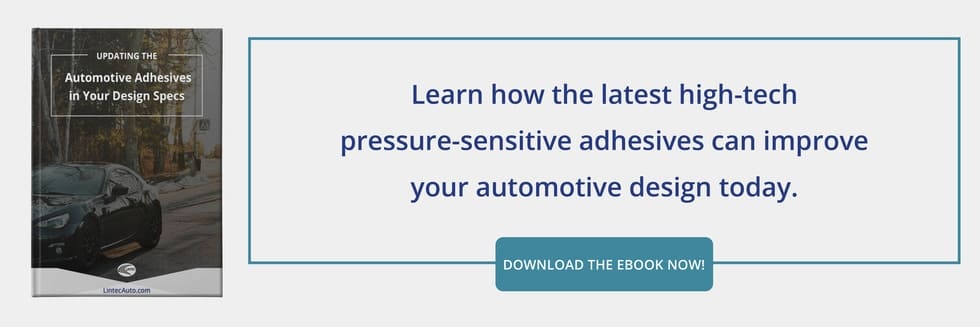Wheel paint protection film for cars (also known as PPF) is an invisible thermoplastic urethane or polyurethane film that guards automotive body elements against rock chips, scratches, bug splatters, and contaminants. But what traits make the perfect automotive paint protection film?
Originally developed to protect rotor blades on military helicopters in the Vietnam War, the first protection films were thicker and less flexible; helicopter blades were a flat surface that didn’t require the complexity or conformability of automotive surfaces. However, the specs of high-quality PPF have changed a lot over the years.
Automotive Paint Protection Film Specs For Today
The three basic traits that are critical for PPFs of today include:
- Clear: Ideal automotive paint protection films won’t alter the appearance of the paint—only preserve it—even under long-term UV exposure.
- Elastic: The film must curve, stretch, and bend to the vehicle’s surface.
- Resilient: Years of exposure to small debris and the elements shouldn’t harm the film’s integrity or its adhesion to the vehicle.
A few other traits are desirable if the automotive paint protection film is to be considered truly “ideal”:
- Self-Healing: Small scratches or abrasions in the surface should fade away with heat or time as the film restores into its original shape.
- Hydrophobic: Low surface energy (similar to waxing the vehicle) will prevent a buildup of residue or smudges while also repelling moisture from rain and snow.
- Easily Replaceable: When significant damage occurs, the film should be able to peel away without harming the paint of the underlying surface or leaving behind problematic residue.
It takes several layers in the product to achieve all of these traits, and it will be this particular combination of materials and adhesives that make your chosen film “ideal.”
Many films manufacturers apply automotive paint protection films on a limited basis to high-impact areas of their vehicles (front fascia, hoods, fenders, side mirrors, etc.). However, it’s also possible to completely wrap a vehicle’s exterior. Your project/application will influence the ideal specs, of course, but here are some baselines for a well-balanced, high-quality PPF for cars and other consumer vehicles:
How thick should it be?
Automotive paint protection films typically range between 6 mils (0.0006 inches) and 14 mils (0.0014 inches) in thickness, with thicker options being less flexible and more noticeable, but also more durable. The sweet spot is about 8 mils (0.0008 inches), not including the release liner—enough thickness to offer robust protection, but thin enough to be invisible and highly conformable.
How long should it last?
Depending on the manufacturer and specs, you might see warranties of 5 to 12 years. A reliable automotive exterior paint protection film will have an expected lifespan of 10 or more years.
What’s the right level of transparency?
Clarity is essential to both the invisibility of the protective layer and its ability to transmit light (PPFs can also be used to protect headlights). Ideally, less than one-tenth of one percent (0.1%) of light will be blocked by the film. Also, clear protective film for cars shouldn’t cloud or yellow over time (and UV exposure) before the expiration of the warranty. Modern urethanes and adhesive layers have vastly improved in this regard over older types.
How should it self-heal?
Some films require treatment from a heat gun to restore their smooth original gloss. The best automotive paint protection films will be able to self-heal with a little time and heat from direct sunlight alone.
What should the layered makeup look like?
The top layer should be a thin (less than a mil) clearcoat of elastomeric polymer that gives the automotive paint protection film self-healing and hydrophobic properties. Under that, the urethane or polyurethane layer (around 6 mils) will offer the thickness and durability needed to withstand impacts. An acrylic adhesive layer (1-2 mils) below will adhere the film to the car without yellowing over time. Finally, a release liner (1-3 mils) protects the film until the application.

